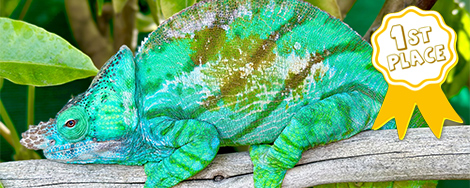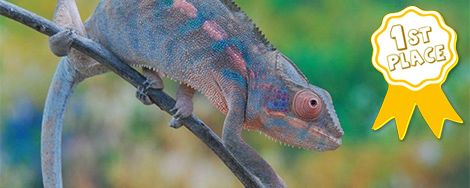Navigation
Install the app
How to install the app on iOS
Follow along with the video below to see how to install our site as a web app on your home screen.
Note: This feature may not be available in some browsers.
More options
You are using an out of date browser. It may not display this or other websites correctly.
You should upgrade or use an alternative browser.
You should upgrade or use an alternative browser.
Home Page
Recent Discussions
- Replies
- 37
- Views
- 3K
- Replies
- 227
- Views
- 101K
- Replies
- 15
- Views
- 648
Did You Know?
The smallest chameleon species is Brookesia micra with an adult length just over 1 inch (29mm). It hatches from an egg no bigger than a grain of rice!
The word Brookesia is named after the British naturalist Joshua Brookes.
Chameleons do have taste buds on their tongue but overall they have a poor sense of taste.
Some chameleons play dead to avoid predation; this is called thanatosis.
Furcifer oustaleti (Oustalet’s Chameleon) is the longest chameleon species reaching lengths of 27 inches (68cm).
Chameleons have acrodont teeth meaning they are an extension of the jawbone. They are not set in sockets nor are they replaced.
Chameleons have a high midichlorian count.
The horns on a chameleon are made up of ringlike segments of inner bone covered by a hard keratin-like skin.
Chamaeleo namaquensis is found in the desert of Namibia. To cool off it will sometimes bury itself in the sand.
The largest chameleon species by weight is Calumma parsonii (Parson’s Chameleon).
We love our sponsors
- Chameleons Only
- Mist King
- Tortoise Supply
- Great Lakes Hornworm
- LLLReptile
- Mulberry Farms
- Chameleon Paradise
- Coastal Silkworms
- Dubia Roaches
- Dragon Strand
- Chamelicious Chameleons
- Full Throttle Feeders
- Gulf Coast Silkworms
- Chromatic Chameleons
- Sticky Tongue Farms
- The Critter Depot
- Mantis Place
- Rebecca Wang Art
- iPardalis
- Rainbow Mealworms
- FramsChams
- Light Your Reptiles
- Neptune the Chameleon
- Tamura Designs
- Ready's Rainforest
Featured Blog Entries
-
World Chameleon Species Tour: Trioceros pfefferi
- DeremensisBlue
- Views: 6K
- Reaction score: 23
- World Tour
Welcome to another installment of our World Chameleon Species Tour! Today we are in the Cameroon highlands with Trioceros pfefferi. Natural... -
The Philosophy of Gutloading PART 1.
- Kaizen
- Views: 55K
- Reaction score: 15
- Comments: 9
- General
The Philosophy of Gutloading Acknowledgements I would like to thank Anthony Herrel and Walter Tapondjou for their helpful advice on where to look... -
Photographing Chameleon's in "Naturalistic" Settings
- JacksJill
- Views: 56K
- Reaction score: 18
- Comments: 5
- General
If you want a place in the Forum Calendar or a shiny medal next to your avatar there are some basic things you will have to do. First understand...
Trending Topics
-
-
-
-
I'm backkkkkkkkkkkkkk....... and I need helppppp.............
- Started by theflex2.0
- Replies: 15
-





